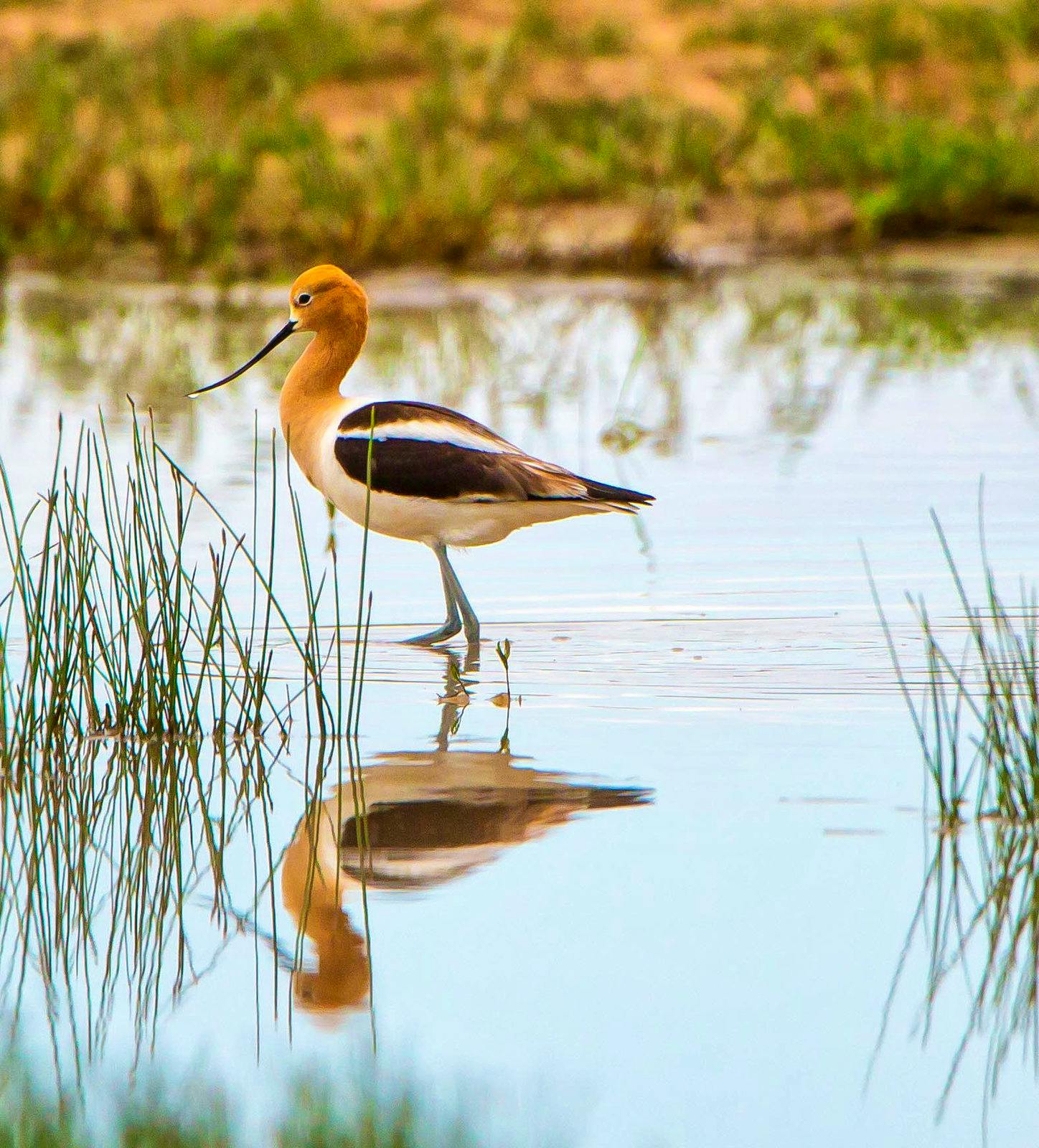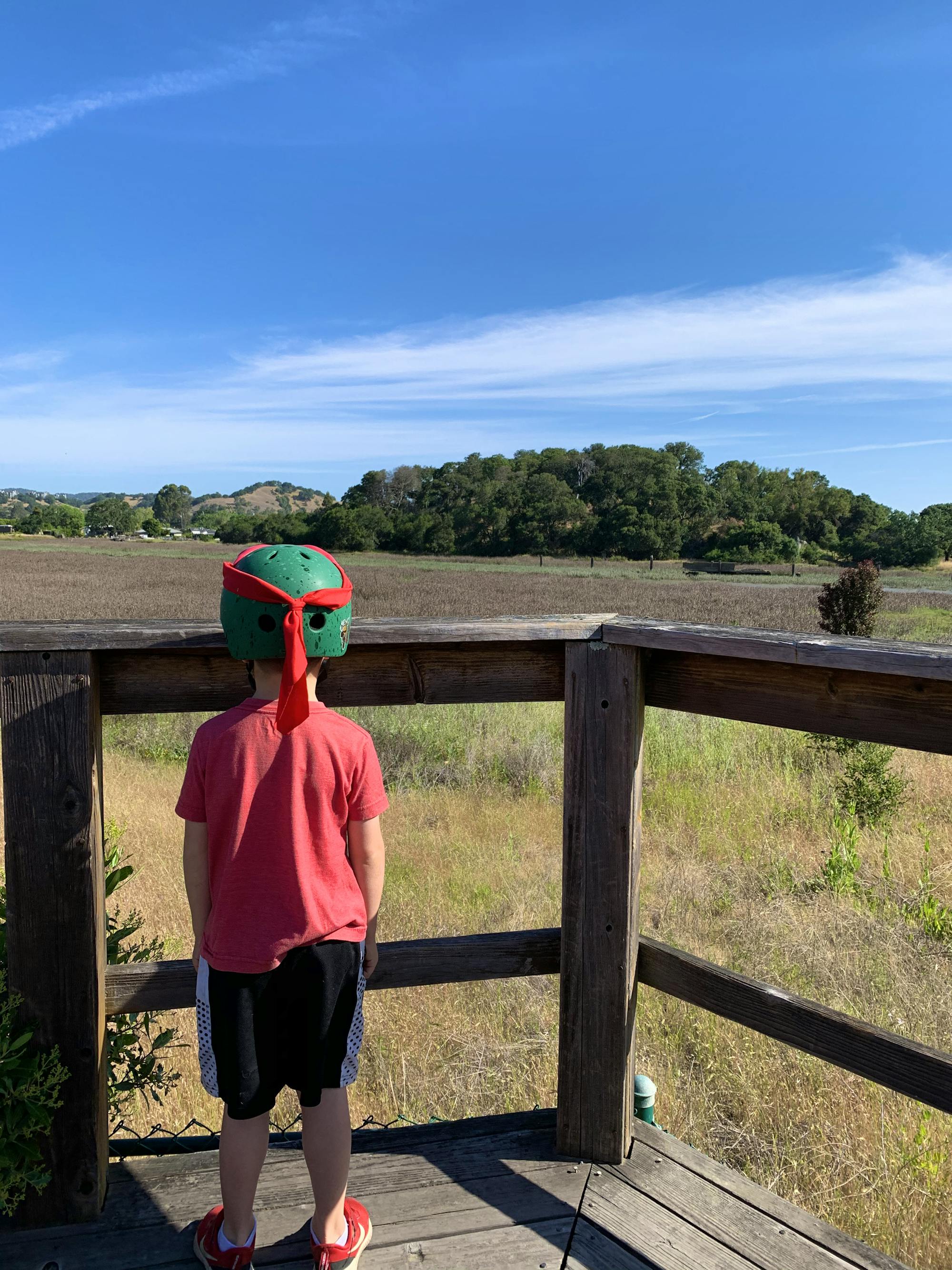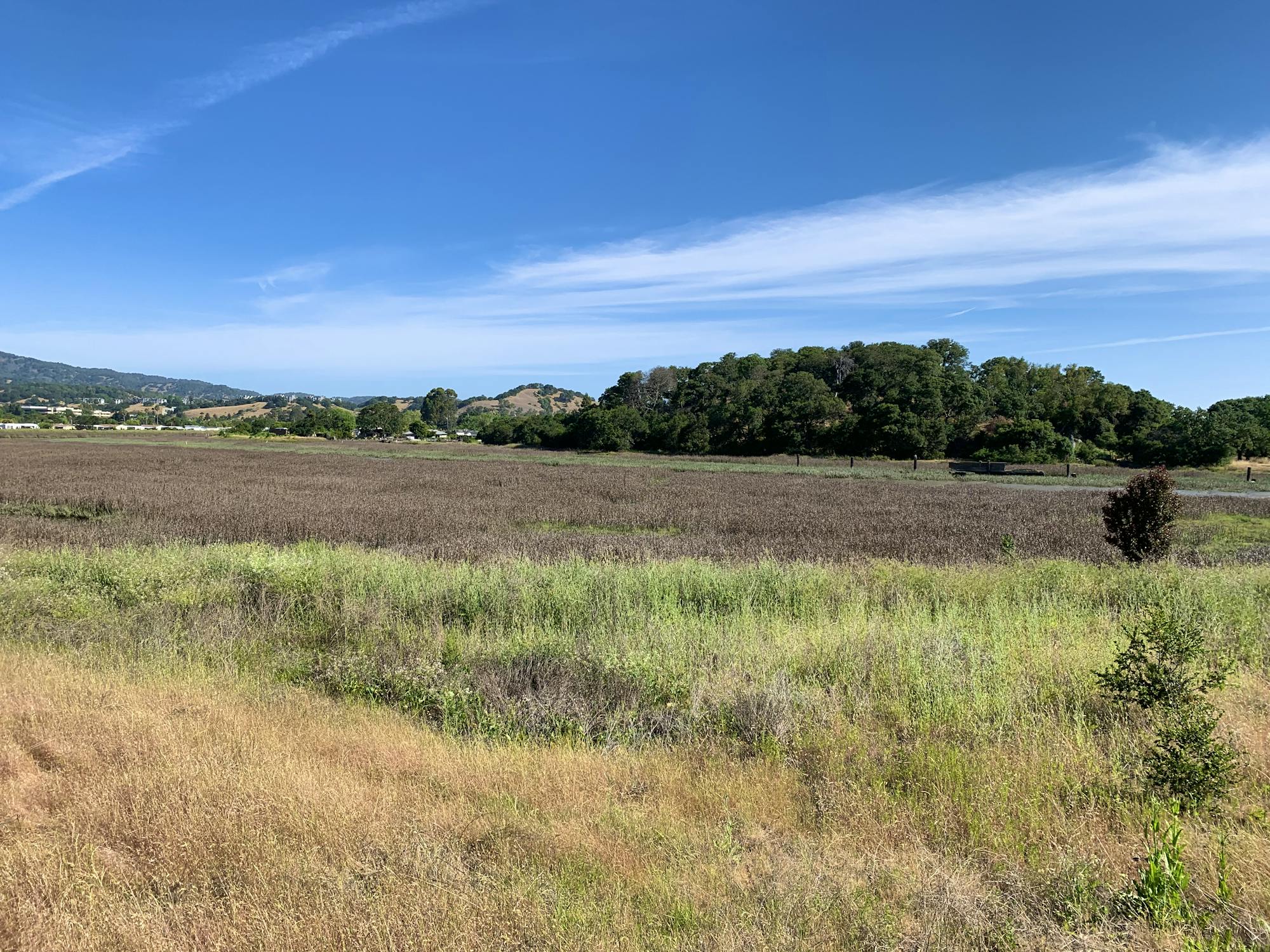Spring is in full swing, and even though most of us are sheltering in place, predominantly inside, life outside is stirring in every direction with migrations, nesting, new birth and full blooms. May is American Wetlands Month, and it’s a great time to remind ourselves of all that these amazing habitats offer to wildlife and people alike.
More than one-third of our country’s threatened and endangered species live exclusively in wetlands, and almost half of these imperiled species use wetlands at some point during their lives. Wetlands are truly cradles of biodiversity—supporting an astonishing array of animals. They provide food and shelter for ducks, hawks and songbirds, fish like salmon and flounder, mammals like otters and beavers, and a variety of reptiles and amphibians.
Beyond their wildlife benefits, wetlands provide key services for human communities. They protect against flooding and sea-level rise, help to recharge groundwater, and provide amazing opportunities for birdwatching and other recreation. Wetlands also naturally filter out pollutants, improving water quality and making our rivers and estuaries healthier for fish, other wildlife and people.
Sadly, however, wetlands haven’t always enjoyed the glowing reputation they deserve. They’ve been drained, filled and disconnected from the rivers that once brought them life. In California, we’ve lost more than 90% of the wetlands that once spread across the state.
For all these reasons, in May and every month, Defenders’ California program works tirelessly to protect our last remaining wetlands.
Guarding Against Federal Rollbacks
The Trump administration has made gutting protections for wetlands a priority. It repealed the Obama administration’s Clean Water Rule, which helped to ensure important wetlands and waterways were protected by the Clean Water Act, then replaced it with a narrow rule that only provides protection for a fraction of the wetlands that support wildlife. Defenders has taken the Trump administration to court to invalidate the unlawful and harmful new rule.
In California, we’re also doubling down and using state law to protect our remaining wetlands. For the past decade, Defenders has been a leading voice working with state regulators to craft a new rule that will allow state agencies to protect wetlands and other waterways against destruction and pollution, even if they aren’t protected by the federal Clean Water Act. The rule was adopted in 2019 and will become effective May 28, 2020. The new rule will safeguard important California wetlands like vernal pools, mudflats and playa, and is a major victory for wildlife and clean water in our state. What a perfect way to cap off American Wetlands Month!
Conserving Central Valley Wetlands
Defenders works to ensure that state, federal and private wildlife refuges in California’s Central Valley receive the water they need to support millions of Pacific Flyway birds and other wildlife that depends on wetlands. With our Central Valley Joint Venture partners, we are working to update and implement the group’s population and habitat objectives, which establish short-term (10-year) and long-term (100-year) conservation objectives for birds that rely on coasts, wetlands, riparian areas and grassland-oak savannahs across the Central Valley. Through the Joint Venture, we coordinate with hunting and conservation organizations and state and federal agencies to implement the Central Valley Project Improvement Act’s water supply mandates. We also work in Congress to oppose efforts to undermine protections for wildlife refuge water supplies.





Wetland-Friendly Water Storage
We know from history that water storage projects can wreak havoc on the environment. In California and throughout the West, traditional dams killed rivers and blocked migratory routes for salmon and other fish. Dams also cut off rivers from their historical floodplains and starved wetlands of the water needed to sustain birds, turtles, snakes and many other wetland creatures. Despite repeated promises that the next project would be different, California’s biggest dams left a long legacy of environmental damage and bone-dry wetlands.
Today, Defenders is working to advance modern water storage solutions that will benefit both communities and wildlife. We’re helping to secure funding for the Los Vaqueros Reservoir Expansion, which is an innovative project to enlarge an off-stream reservoir in the San Francisco Bay Area and provide water to parched wildlife refuges in the Central Valley. We are also fighting proposed federal legislation that would take us back in time and provide funding for new, wetland-destroying storage projects. By focusing on wetland-friendly water storage solutions, we’re working toward a brighter future with reliable water for farms, communities and wildlife.
Protecting Wildlife on Agricultural Lands
With more than 95% of the wetlands in California’s Central Valley destroyed, rice production in the Sacramento region has provided surrogate habitat for wetland-dependent wildlife. Flooded rice fields are a lifeline for giant garter snakes, which are listed as threatened under the Endangered Species Act. These same fields also provide food for millions of Pacific Flyway birds each year. However, because of limited water availability and other pressures, wildlife-friendly rice agriculture is in short supply some years.
As we manage among many conflicting water needs, Defenders works to ensure that water- management decisions affecting rice agriculture account for the needs of wetland-dependent wildlife. We focus on making sure water sales involving rice fallowing – when rice fields are inactive and therefore dry for one or more growing seasons – include measures to safeguard giant garter snakes, increasing water availability for birds that feed in the Sacramento Valley’s rice fields in the winter and protecting high-value rice fields from being de-watered.
California’s Endangered Species Act
California’s Endangered Species Act is a powerful law and could be an asset for protecting the state’s threatened and endangered wetland species, like giant garter snakes. Unfortunately, it isn’t used to its full potential and often falls short of what’s necessary to safeguard vulnerable wildlife. Defenders is working in the courts and with our state conservation partners to strengthen implementation of the state’s Endangered Species Act to help California’s wetland plants and animals recover and flourish.
Inspiring a Love of Wetlands
With today’s social distancing measures, most of the work I’ve described is occurring through letters, virtual meetings and telephone calls. While I can’t meet face-to-face with managers at wildlife refuges to hear about their challenges or brainstorm with rice farmers about better management practices, I’m still finding ways to connect with the wetlands I love. Last weekend, my family went on a (socially distanced!) outing to a local tidal marsh. My young boys poked sticks into the mud, hunted for wild creatures and reveled in the fresh air and open space. In addition to making progress on all our wetland work in the coming weeks, I will call this American Wetlands Month a success if I’m able to help my kids find a sense of wonder in the marshes that surround us.









